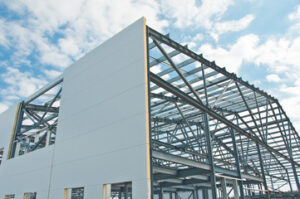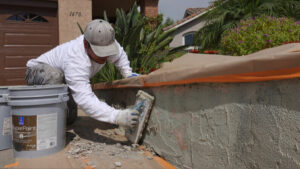Metal Buildings OKC can serve a wide range of purposes. Some of the most popular include barns, garages, and storage sheds. In addition to their practical uses, they also offer some unique aesthetic qualities.

Thanks to innovations in metallurgy, metal building construction has become faster and easier. This has led to more durable and versatile structures.
Whether it’s for a metal garage, job site solutions, or even commercial space, many individuals and businesses are choosing steel buildings over traditional construction. These structures are designed with modern needs in mind, and their versatility and quality offer cost-effectiveness. They are also highly scalable, allowing owners to customize and expand them as their needs change. If you’re considering a metal building for your next project, be sure to talk to a contractor who specializes in these types of structures. They’ll be able to guide you through the process and ensure that your project is completed accurately.
One of the biggest advantages of a steel building is that it requires less maintenance compared to wood-framed buildings. Unlike wood, steel is termite-resistant and does not require regular pest treatments or the costly repairs that these pests inflict on wood structures. Additionally, metal is fire-resistant, preventing the spread of fire from one room to another. These benefits significantly reduce annual maintenance expenses.
Energy efficiency is another key benefit of a metal building. They are designed with thermal insulation, reducing the need for costly heating and cooling systems. In addition, they often feature solar integration, further lowering energy costs.
Finally, the durability of a metal building makes it a perfect solution for warehouses and distribution centers. The structures’ strength allows them to accommodate heavy machinery and large inventory items, while the durable materials ensure that they remain in pristine condition for years to come. They can also be customized with clear span framing and large door openings to maximize interior space for workflow. This flexibility helps to minimize future expenses and ensures that the facility can adapt as your business grows.
Versatility
Metal buildings are incredibly versatile and can be used for a wide range of purposes. They can be erected in less time than traditional construction methods, and they are also more cost-effective. In addition, they are highly durable and can withstand harsh weather conditions and natural disasters. This versatility makes them a popular choice for warehouses, aircraft hangars, complex industrial facilities, transportation and logistics warehouses, and agricultural buildings.
Another benefit of metal building construction is that it offers a sleek, contemporary aesthetic. These structures can be designed to accommodate a variety of aesthetic preferences and needs, including large windows and open spaces. In addition, they can be insulated to reduce heating and cooling costs.
Since they are strong and durable, metal buildings are also a great option for storage. They can be customized to meet the specific storage requirements of your business or home, and they can be equipped with security features to protect your belongings. In addition, a steel structure is more energy efficient than a wood-framed building.
A metal building can be easily transformed into a workshop or garage. The walls of a metal building can be left unfinished to allow you to customize the space, or they can be fitted with partitions to separate different areas. This flexibility gives you the option to add more rooms in the future as your business or hobby grows.
Metal buildings are often rectangular in shape, but they can be made into any size and shape you need. This flexibility makes them a good choice for businesses that have limited land and budgets. They can also be constructed with a variety of materials to achieve the desired look and style, such as brick, stone, and tilt-up concrete.
Flexibility
Whether you’re looking for a warehouse space, manufacturing plant, recreation center, or something else entirely, steel buildings can be easily customized to fit your needs. This flexibility is a big selling point for many potential clients. It allows them to save money by purchasing a building that fits their current needs, rather than paying for a full building renovation down the line.
In addition to being highly customizable, metal buildings are also incredibly flexible in terms of size. There are no size restrictions, and you can add a wide variety of doors and windows. You can even choose to have expandable walls, which will make it much easier for you to add on rooms in the future.
Another advantage of metal building systems is that they require less maintenance than traditional structures. They’re naturally resistant to rot and insect infestation, so you won’t have to worry about shingles that need to be replaced or exterior materials that will deteriorate over time. In addition, metal is fire-resistant and can resist severe weather conditions, such as tornadoes and earthquakes.
When constructing a steel building, you’ll want to be sure to consider the location specifics, local codes, and load requirements. These factors will play a role in the pricing of your structure. You can minimize these costs by utilizing BIM (Building Information Modeling) technology, which allows you to see how your building will look before the construction process starts.
Unlike other types of building materials, metal buildings have no length restrictions. This means that you can create a building that’s as large or as small as you need it to be. The best part is that you can also add on lengths later if necessary, saving you time and money in the long run.
Durability
Durability is an essential feature when it comes to building construction materials, especially for structures that will be subjected to harsh weather conditions. Metal buildings are able to resist the impact of extreme temperatures, heavy rains and snowfall, and even seismic activity without suffering damage or deterioration. They also have a long lifespan and require less maintenance than other types of structures.
The durability of steel buildings is also beneficial for industrial applications, as they can be customized to meet the specific needs of different businesses. For instance, they can accommodate large machinery and equipment by providing a spacious environment with high ceilings. This makes them ideal for warehouses and distribution centers, which require a large open space for storage and logistical operations. Additionally, they are also designed to support overhead cranes and other specialized infrastructure.
Another advantage of using metal building components is their resistance to corrosion. They are made from galvanized and painted steel, which guards against the corrosive effects of oxygen and moisture. Additionally, they have corrosion-resistant fasteners and joints that ensure the longevity of the structure.
Moreover, the steel used in these structures is non-combustible, which prevents fire from spreading through the structure and helps keep its internal temperature stable. They are also energy efficient and offer a variety of insulation options, which can reduce the need for excessive heating or cooling. In addition, they are environmentally friendly as they can be recycled and reused.
In addition, the durability of metal buildings is a great benefit for owners who plan to sell their building at some point in the future. Because they are durable and easy to maintain, they will attract buyers and make the sale process easier.
Safety
When it comes to metal buildings, safety is always a top priority. This is because they are able to withstand many environmental stressors that other construction types cannot. This includes high winds and seismic activities. Moreover, they can be built to withstand fire hazards. They also have great durability and require minimal maintenance. These features make them ideal for facilities and industrial buildings that are exposed to a variety of environmental threats.
Another feature that sets them apart from other construction materials is their ductility. This means that they can bend without compromising their structural integrity. This allows them to absorb more energy than weaker structures, which reduces the risk of structural damage and injuries. This also enables them to be erected faster and more efficiently than other building materials.
Additionally, the reduced weight of a steel structure puts less pressure on the foundation and underlying soil. This helps prevent settling or other ground-related issues. This is especially important in regions with strong winds. Moreover, the strength-to-weight ratio of steel allows architects and engineers to design more open interior spaces, which can lead to improved functionality.
Steel buildings are also pest-resistant, which means they will not have to be treated with pesticides or undergo costly structural repairs due to termite or other insect infestation. In addition, they can withstand heavy snow loads, which reduces the need for extra support in areas that experience a lot of snow.
The safety of steel buildings depends on several factors, including regular inspections and compliance with local building codes. It is also necessary to ensure that occupants follow proper protocols and safety guidelines. These protocols can include training, clear evacuation routes, and frequent drills to prepare them for emergencies.
